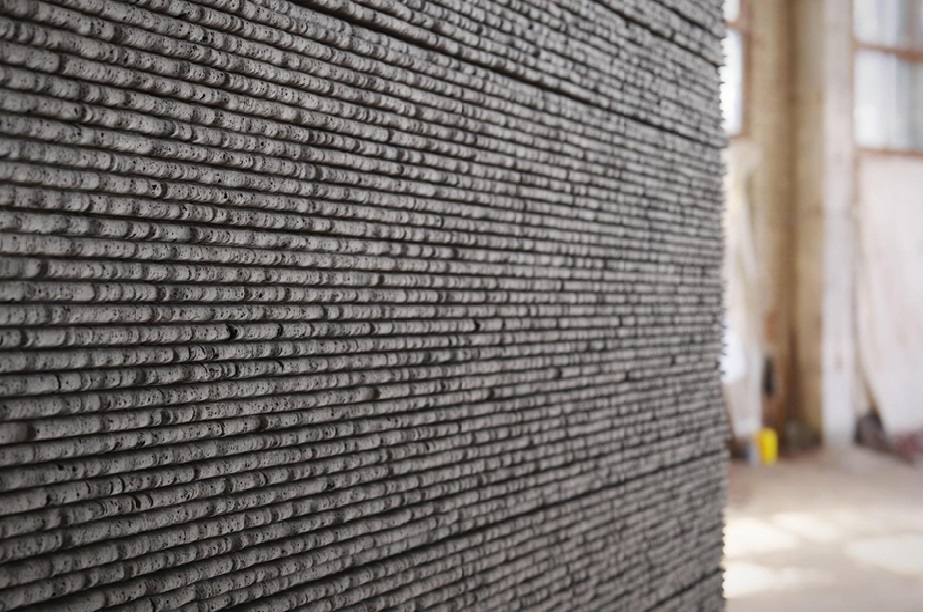In a presentation to a World of Concrete event in the USA recently, Michelle Wilson, senior director of concrete outreach and support at the Portland Cement Association looks at the developments and implications of new concrete applications in the construction industry.
World of Concrete speaker Michelle L. Wilson explored a range of technologies designed to increase productivity, aesthetics and more, including translucent concrete, engineered cementitious composites and robotics.
To outsiders, concrete may seem like a mundane, slow-to-change material. But those inside the industry know better, as we watch new innovations continually enter the fray and shift the way we formulate, make, design with and install cement and concrete to improve everything from efficiencies to strength to sustainability.
As if to confirm, Michelle L. Wilson… kicked off her World of Concrete with this statement: “Concrete is not boring. Concrete is exciting. We can do anything that the owner can envision.”
During her presentation, Wilson explored a handful of innovations the concrete industry is witnessing, some that are more familiar and are in later stages of adoption and others just emerging.
Here’s a look at some of the technologies Wilson discussed:
- Translucent Concrete
Translucent concrete is exactly as it sounds—concrete that is see-through to some degree,
similar to glass blocks. It received a lot of press about eight years ago but so far has been more popular outside the U.S.
Translucent concrete, almost always used in a precast applications, incorporates optic fibers across the panels or blocks that allow light to pass through. Ideal for fine architecture, facades, interior cladding and even sidewalks and roofs, it allows designers to leverage concrete while eliminating some artificial lighting. - Photocatalytic concrete
Also called self-cleaning concrete, photocatalytic concrete absorbs pollutants while repelling silt. Photocatalytic concrete has titanium powder, similar to what is used in anti-graffiti paint.
Photocatalytic concrete can be used in everyday applications including pavement and bridge decks, Wilson said. The material retains a very white color, making it popular with many architects. - Engineered Cementitious Composites
Engineered cementitious composites (ECC), also referred to as bendable concrete, contain fiber in a cementitious matrix, Wilson and Paul D. Tennis explain in chapter 24 of the PCA published book “Design and Control of Concrete Admixtures,” which gives it ductility. “Bendable concrete can deform up to 3% to 5% before it fails, which gives it 300 to 500 times more tensile strength capacity than normal concrete,” they write. “It is the ability to tolerate tensile strain that makes bendable concrete unique and highly resistant to cracking.”
These attributes make ECC ideal for projects in areas with high seismic activities, including for bridges and high rises, as well as for paved surfaces with repeated heavy vehicle loads. - Additive Manufacturing (3D Printing)
One of the biggest trends, manufacturers have made huge strides in concrete 3D printing by developing a chemistry for cementitious paste that can both flow and set properly. The technology can allow for faster construction in areas impacted by natural disasters like wildfires.
3D printing brings advantages such as speed and a reduction in materials, but it requires changes to the typical design methodology, Wilson notes in her book, with the traditional beam, column, slab and frame elements possibly no longer providing the optimal structure.
The technology has been used on several homes/developments in the last couple of years, though it does require adapting to its beehive look or adding in time for covering and finishing. - Geosynthetic Cementitious Composite Mats
Geotech mats are made of cement fabric for stabilizing soils or near a waterway, such as a culvert on the side of a freeway. The mats come in rolls, just requiring a spray of water to strengthen.
The technology also has been used to quickly construct temporary buildings such as for the military—roll out over a structural shell, spray it, and it’s ready to use in 24 hours. - Robotics
Don’t worry—robots aren’t going to take all the construction jobs, but they can make them a little easier. “It’s really hard to replace the human factor in finishing concrete,” Wilson noted.
But where she does see a lot of potential is in form work modeling and automation, automated reinforcement fabrication (including tying rebar) and other places where they can increase productivity and improve safety. - Drones
Drones can not only be used in common applications like aerial photographs and time-lapses, they’re a great option for reaching/inspecting hard-to-access areas, such as in nuclear or marine projects. They’re also being used with lasers to assess cracks in distress investigations.
If you start using drones, be sure to check your local regulations for licensing and air space restrictions. - Artificial Intelligence
AI is another technology that instils fear of job losses but really serves to make jobs easier and more productive, thanks to the data mining it is capable of. And it’s already readily in use around the industry. For example, it can be used at a ready-mix plant to help optimize materials, and projects can use AI sensors for maturity testing and form removal.
AI can take into account not just temperature and humidity but can be dialled into your mix design to determine set times “We can do a lot more with AI with the right data,” Wilson said. “I can give you a theoretical prediction of when it will set, but data can do it better.”
Katy Tomasulo
February 15, 2024
Katy Tomasulo is an accomplished writer, editor and public relations pro who has worked in the construction industry for two decades. She writes about residential and commercial building products and applications.
Full story at 8 Innovations Advancing the Concrete Industry


